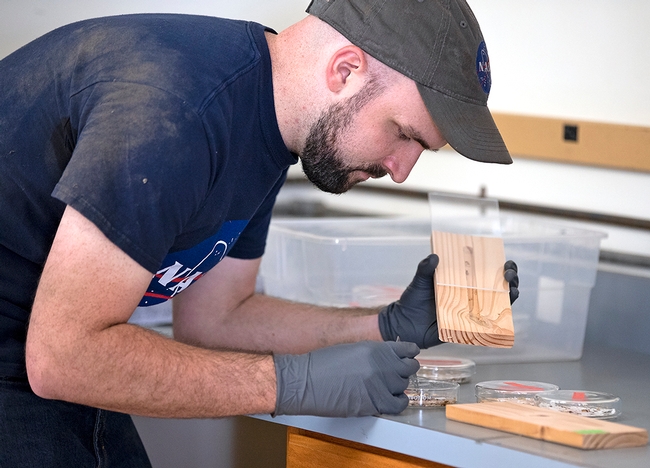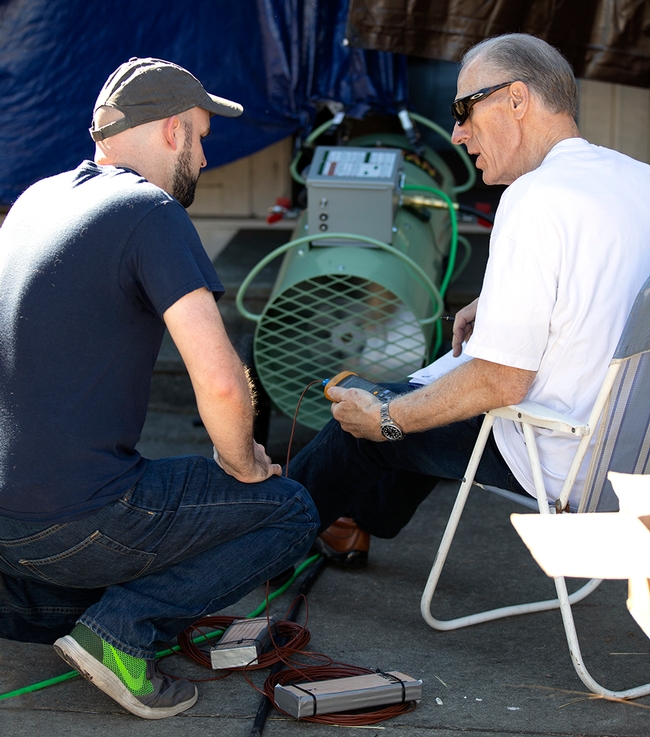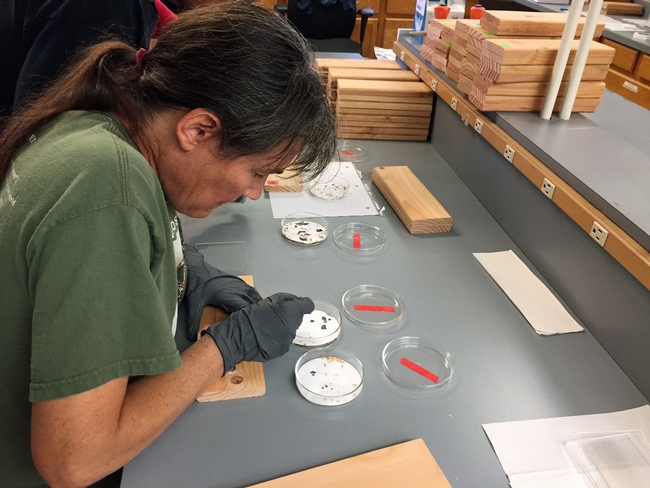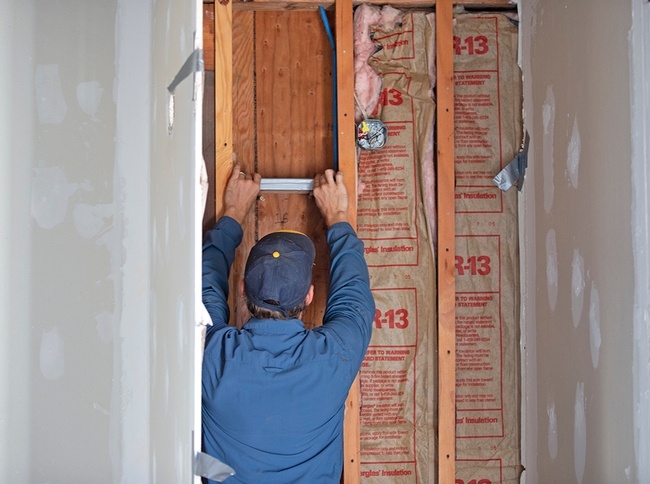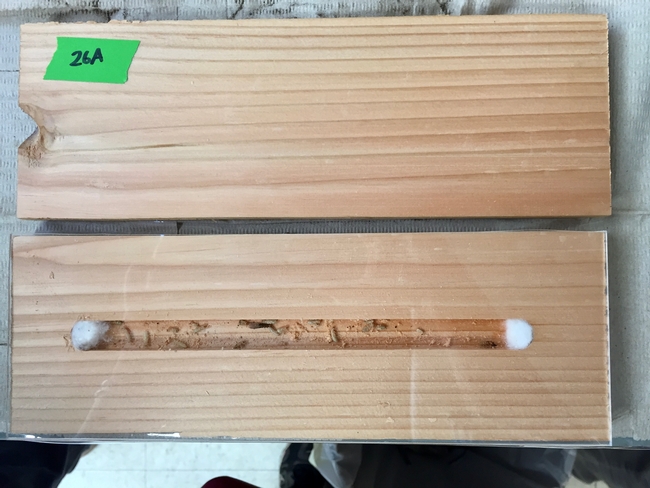Termites can eat you out of house and home by chewing through wood and weakening the structure. The results of a new termite study led by entomologists at UC Riverside may enable homeowners to rid their homes of termites with a safer, effective pest control approach.
“Combining a volatile essential oil with heat might reduce callbacks for pest management professionals and potentially lead to lower risk of heat damage to things in the homes,” said Dong-Hwan Choe, UC Cooperative Extension specialist in the Department of Entomology at UC Riverside.
The conventional method of exterminating termites requires residents to vacate the house while pest control professionals tent the structure then pump in toxic chemicals to kill the termites. While insecticides are effective at killing termites, urban pest managers are under pressure from regulators and residents to find alternatives that won't harm people, pets or the environment.
To rid structures of termites without using chemicals, pest control professionals heat the air inside structures to lethal temperatures. However, termites can survive in hard-to-heat areas such as in wood positioned against concrete foundation walls. In a recent study, Choe found adding essential oils to heat treatments can kill termites insulated from the heat.
“You need some kind of insecticide to kill the termites in those locations that are hard to heat,” said Daniel Perry, who conducted the study as a UC Riverside graduate student with Choe.
“By using an essential oil, which is toxic to termites, we can kill them without really any risk to humans or other animals that live in the house.”
The western drywood termite, Incisitermes minor (Hagen), is a common structural pest in the United States native to California, from the border with Mexico to Central California and inland to the Sierra Nevada Mountains.
“We tested several insecticidal essential oils on individual western drywood termites and found that methyl salicylate, or wintergreen oil, killed them the fastest,” said Choe.
Wintergreen oil kills termites, but it doesn't hurt people or their pets. Although pest control professionals commonly use orange oil for localized drywood termite treatments, wintergreen oil has about twice the flash point so it's safer to use with the heat treatment, Perry said.
To test the synergy of the volatile essential oil and heat, the research team placed wood blocks infested with 20 drywood termites each in Villa Termiti, a small wooden structure built for pest management research at the UC Berkeley Richmond Field Station. They applied 160microliters (about 16 drops) of wintergreen oil to some infested wood blocks (the treatment) and no wintergreen oil to other infested blocks (the untreated control), then used propane heaters to heat the house to between 134 degrees and 146 degrees Fahrenheit for 140 minutes. After seven days, they found that 92% to 100% of the drywood termites were dead when treated. In contrast, in blocks without the wintergreen oil, only 36% to 44% of the termites died in the same time period when treated within areas near the concrete foundation wall. Incorporation of the essential oil substantially increased the control efficacy for this area near the foundation, resulting in more than 90% mortality.
Lethal temperatures and essential oils will kill termites at all life stages, but the scientists used immature termites at the pseudergate (worker) stage. The wingless, pale pseudergates do most of the work for the colony, excavating tunnels and chewing up food for the other termites to eat.
“If you can kill all of the pseudergates, then the rest of the colony will likely collapse,” said Perry, who went to work for Procter & Gamble after finishing this project and his master's degree at UC Riverside.
“The most common treatment is fumigation and that requires three or four days during which the structure has to be vacated,” said Perry. "With the heat treatments, all you have to do is heat up the structure until the wood inside gets to the temperature that will kill the termites, hold the lethal temperature for a few hours, and then let the house cool off. You only have to be out of the house for maybe six hours, so it's a lot more convenient.”
Andrew Sutherland, UC Cooperative Extension integrated pest management advisor for the Bay Area, offers training for pest management professionals. He is encouraged by the results.
Sutherland said, “It means that folks will be able to heat effectively at lower target temperatures and lower durations, so it's less cost for everybody, and probably less time for everybody. It's a way to really synergize the heat treatment and no fumigant gas is released to the atmosphere.”
“Volatile Essential Oils Can Be Used to Improve the Efficacy of Heat Treatments Targeting the Western Drywood Termite: Evidence from Simulated Whole House Heat Treatment Trials” was published in the October 2020 edition of Journal of Economic Entomology.
